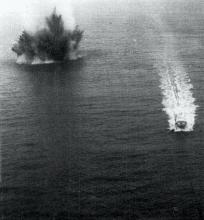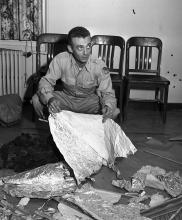Listen to today's episode of StarDate on the web the same day it airs in high-quality streaming audio without any extra ads or announcements. Choose a $8 one-month pass, or listen every day for a year for just $30.
You are here
Pioneer 9
One threat facing our technology-powered world is space weather. Storms on the Sun can cause big problems here on Earth. They can knock out power grids, disrupt some radio signals, and damage or destroy satellites.
We began to learn how space weather works in the 1960s, with a network of Sun-watching spacecraft. The fourth and final member of the network, Pioneer 9, was launched 50 years ago today.
The Pioneers monitored solar activity. They measured the solar wind, for example — a stream of charged particles that travels at millions of miles per hour. They also studied the Sun’s magnetic field and other phenomena.
Magnetic activity on the Sun is responsible for space weather here on Earth. Big storms can produce outbursts of particles and energy. When those outbursts reach Earth, our planet’s magnetic field can funnel the charged particles toward the surface.
When the particles strike atoms and molecules, they produce colorful aurorae — the northern and southern lights. They can disrupt the ionosphere — a charged layer of the atmosphere that bounces radio waves around the planet. And at the surface, they can cause power blackouts.
Pioneer 9 operated for 15 years, with some of the other craft going even longer. A planned fifth member of the network was destroyed during launch in 1969. Even without it, though, the Pioneers helped scientists begin to understand space weather, and develop ways to forecast this threat from the Sun.






